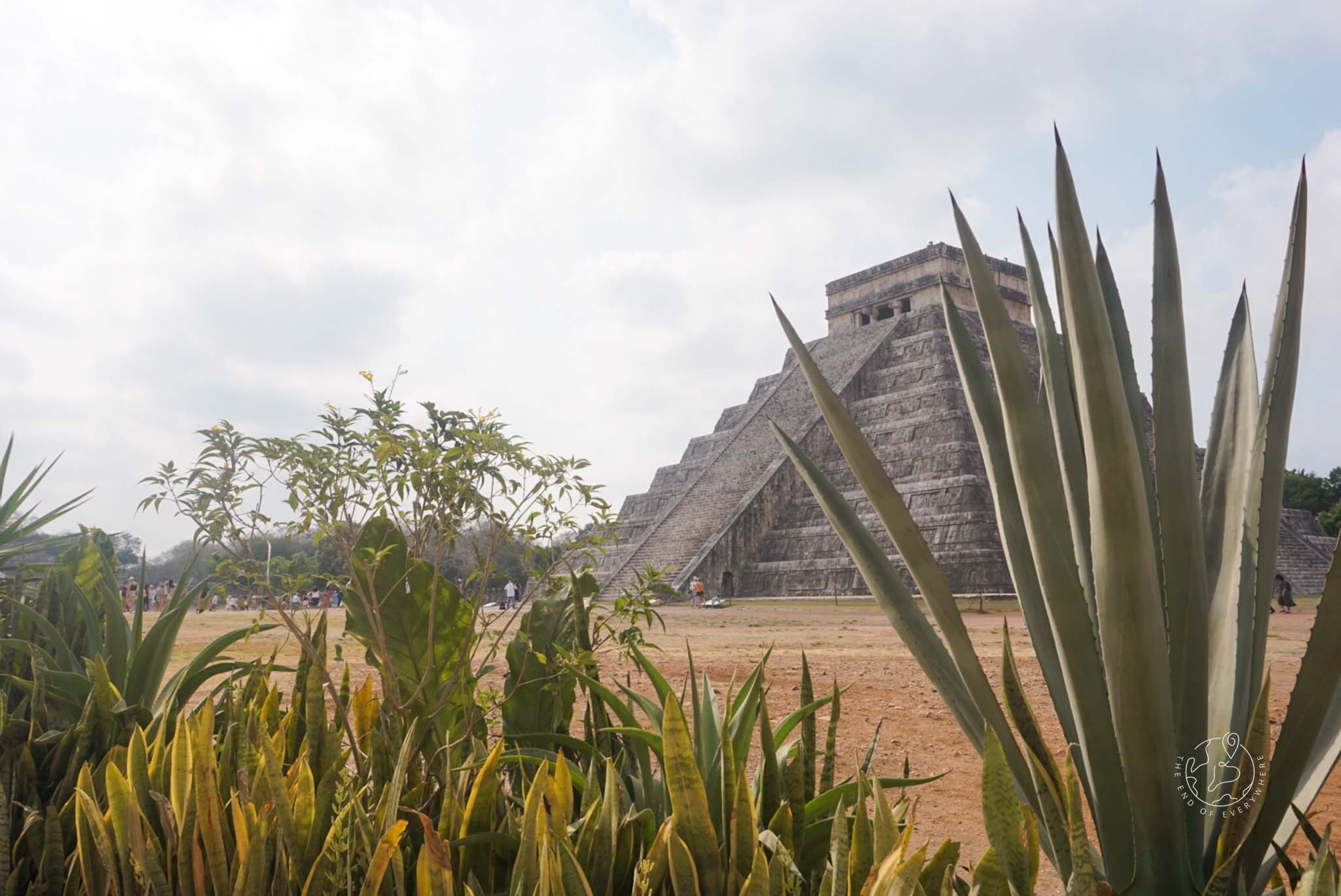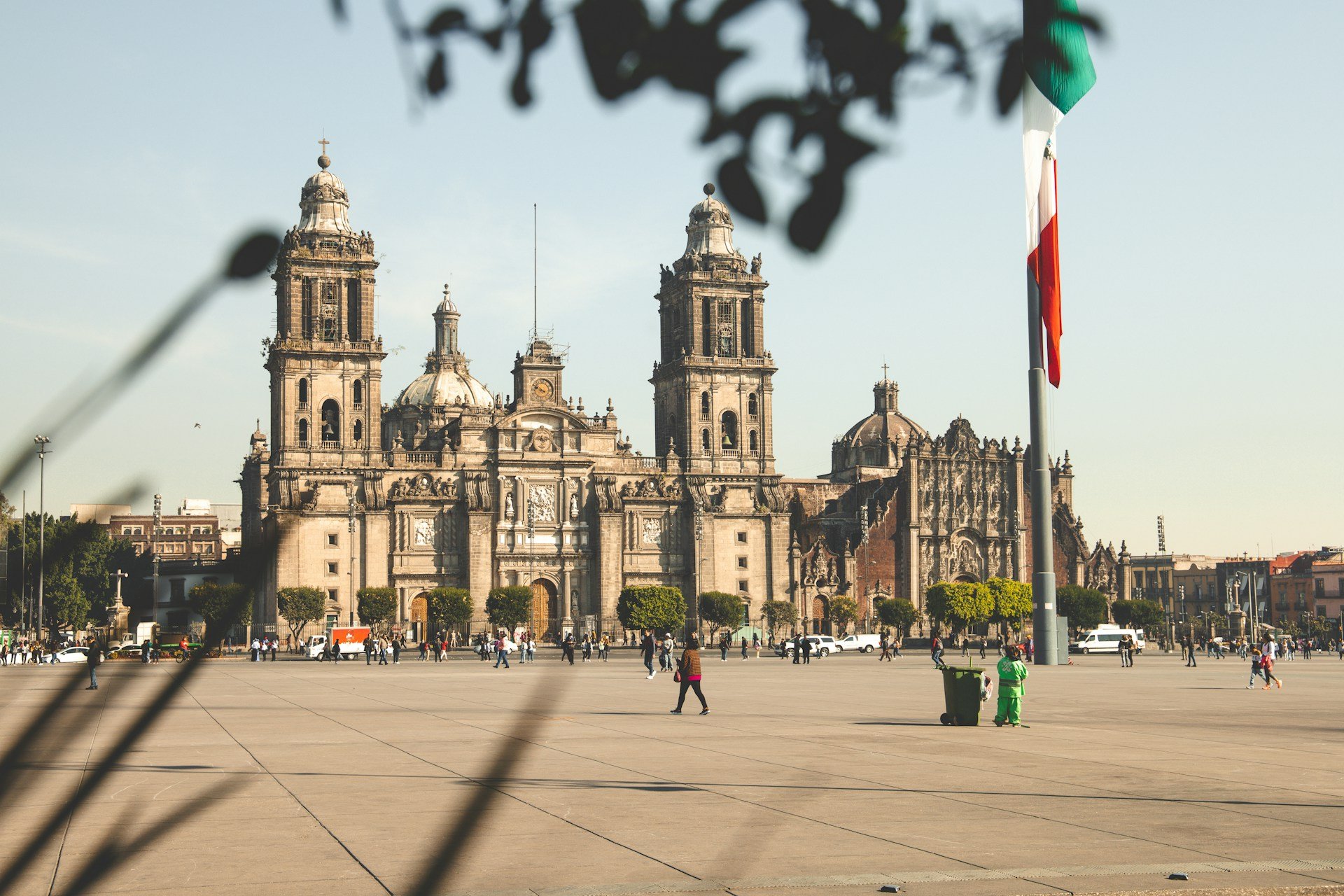Valladolid: World Wonders and Serene Cenotes
El Castillo, the famous stepped pyramid at Chichen Itza
We arrived in Valladolid just in time for a third instalment of a series we are calling “Temple Tuesdays.”
Having visited the ruins at Tikal two weeks ago, and Calakmul last week, it seemed only right that our first full day (a Tuesday) was dedicated to the most famous Mayan ruins of them all: Chichén Itzá. One of the new seven wonders of the world (and the second ‘new wonder’ of our trip, after our visit to Machu Picchu last year).
We got the first colectivo of the day from Valladolid centre, arriving at the gates to join a small queue just as the site opened at 8am. Being a wonder of the world comes with a price tag it seems - it cost just over £30 each to enter (compared to £15 each at Tikal and £14 each at Calakmul.) Graeme even had to pay an extra fee to take his GoPro inside… ouch.
Upon entering, we were greeted almost immediately by El Castillo - the huge stepped pyramid that is most commonly associated with the site. It really is incredible to see!
Not only is it imposing to behold, but the structure reveals Mayan knowledge of science and astrology. Each side of the pyramid has 91 steps which, when added to the extra step up to the altar, totals 365 - one for each day of the year. The way the pyramid was build means that the shadows cast at spring and autumn equinoxes create the illusion of a serpent slithering down the steps, the shadow lining up perfectly with a stone serpent head carved at the base… it’s mind-blowing stuff!
Whilst El Castillo is without a doubt the main attraction at Chichén Itzá, there is a lot more to discover at the site. Around the main pyramid are several other, smaller, temples and altars that had different uses. Perhaps the most gruesome was the altar of the skulls which, as you might guess, was used to display the skulls of sacrificial victims. The stonework itself is covered in hundreds of skulls carved into the base of the altar. In fact, there are many examples of incredibly preserved carvings in the stone. My favourite example was carvings of an eagle holding a human heart in its claws!
The site is also home to one of the largest examples of a playing field for Mayan ball games. These were ritual games played with opposing teams trying to get a ball through a hoop using only their hips. At the end, there would be sacrifices - there is some debate about whether this would be prisoners or members of the losing team. The court is huge and the hoop where the ball should pass is really high, I have no idea how anyone scored!
My favourite part of the site was the area around the Temple of a Thousand Columns. It was set a little back from the main area so was quieter. It was probably some kind of market place in the ancient city, and the rows and rows of columns, some with intricate carving still visible, were a very impressive sight.
Chichén Itzá was the quickest of the three sites we have visited to walk around, taking us about 2 hours in total. It’s an unmissable, bucket-list stop on any Yucatan itinerary, but I will say that it’s probably number 3 out of the 3 sites we visited.
I really liked that the excavation of the whole area gave a good idea of the grand scale of things, and it’s probably the most accurate site in terms of of what it was like to live a normal life in the city. The extensive excavation and conservation work also meant we were able to appreciate the beautiful details of the carvings better than any other site we visited.
However, it all comes at a cost. The first being the actual cost to get in - double that of other sites. Of course it’s very popular and busy with tour groups but I don’t think that’s a particular issue, in fact it’s nice so many people want to discover the history of the area as well as the beaches. If you visit early, as we did, there are relatively few people around.
But even when there are less people around, there are still literally hundreds of souvenir sellers. Stalls line every inch of every path, and it makes it hard to really imagine what the Mayan city would be like when someone is blowing a whistle that sounds like a Jaguar in your ear every 2 minutes. Perhaps it would be better if sellers were confined to one area, a kind of “exit through gift shop” arrangement.
Finally, although the excavation work is incredible and has helped preserve the site, we found walking through the jungle and seeing ruins half immersed in trees was part of the magic of Tilkal and Calakmul - that’s our personal preference, others might feel differently!
Like I said, it’s still an incredible place to visit and I’d never suggest skipping it! But I’m glad we had the experiences at Tikal and Calakmul too.
With the main attraction ticked off, we had a few days to explore the city at a leisurely pace. As well as Temple Tuesdays, I also became a returning customer at Graeme’s Guides! After the success of his self-researched walking tour in Antigua, Graeme swotted up and showed me the most important sites in Valladolid.
It was founded in 1543 by Spanish conquistadors and named after the Spanish city of Valladolid.
In the 19th century, Valladolid played a part in the Caste War of Yucatán, a revolt by the native Mayan population against the social and economic injustices they suffered. The city was also a center of revolutionary activity during the Mexican War of Independence and the Mexican Revolution.
It’s a really beautiful historical centre with colourful buildings and cobbled streets - although perhaps we would have enjoyed it a little more if it hadn’t been a scorching 39 degrees that day!
Our final day was dedicated to visiting some cenotes in the area.
Cenotes are sinkholes or collapsed cave systems filled with crystal clear groundwater. Cenotes in the Yucatan region have been formed over thousands of years through the gradual wearing of limestone rock by rainwater, creating underground caverns and passageways. Eventually the ceilings of these caverns wear so thin that they collapse, and they expose the water beneath, creating the circular openings seen in all the tourism brochures and on Instagram.
The word "cenote" is derived from the Mayan word "dzonot," which means "sacred well.” Although cenotes are tourist attractions now, these were culturally and spiritually significant places for the ancient Mayan civilization.
We visited two cenotes - Xkekken and Samula. The excitement began before we even entered the water, when I had the closest encounter with toucans to date! I was showering before entering the cenote (to protect the water from minerals in suncream, etc.) when I heard a tapping at the window. I was initially scared as I thought someone was watching as I showered… but it turned out to be two colourful toucans, tapping their billed beaks against the glass! It was crazy - all of that time in the jungle craning our necks up for the slightest view of them, and here they were, almost in the shower with me. As there was no one else in the changing rooms, I quickly got dressed and called Graeme in to see them, too!
Both cenotes were accessed by slippery staircases winding their way into an underground cave, filled with crystal clear water. Small holes in the ceiling let light stream in, and rock formations as well as tree roots and vines streamed down from above.
It was an otherworldly experience! We spent a few hours swimming in both, although considering how intensely hot it was outside, the water in the cenotes quickly had us shivering. We were in and out of the water to adjust our temperature!
It was a surreal to be floating underground, swimming through shafts of sunlight whilst watching bats fly around above us. It was unlike any place I’ve ever seen before, eerie and beautiful all at once.
We ended our time in Valladolid with a first taste of mole. I’ve not tired of the tacos yet, don’t worry! But I wanted to expand my horizons and try a few more traditional Mexican dishes.
Mole is a traditional Mexican sauce made from ingredients including chili peppers, chocolate and nuts - along with many spices. It differs regionally and can vary massively in intensity.
I was a bit nervous as had heard it can be bitter and my entire dinner was covered in the rich dark sauce. But I shouldn’t have worried, it was delicious! Very different to anything I have tasted previously, it did have some bitterness and smokey flavours, but also an earthy-sweetness that was moreish. I could have licked the plate clean!
We really enjoyed our time in Valladolid. It can be a place that people rush through just to see Chichén Itzá, but as well as ticking off some bucket-list Yucatan experiences, we enjoyed the charm of the historic streets and colourful plazas just as much.
We left the city with a very specific mission - to find a beach on the Yucatan peninsula that isn’t overdeveloped, overcrowded or full of party-ing spring breakers for Easter weekend. Sounds like a mission impossible! You’ll have to wait for the next blog to find out if we succeed…
Related Content





























